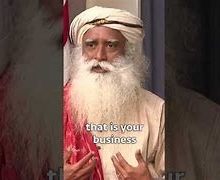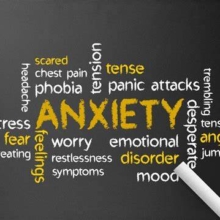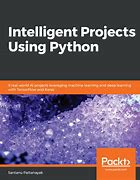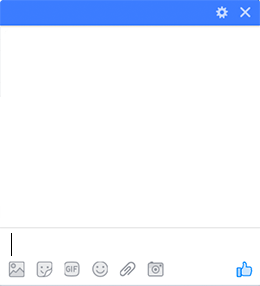Everything is Connected — Here’s How: | Tom Chi | TEDxTaipei
Translator: Queenie Lee Reviewer: Rhonda Jacobs Hello.
00:00:07
(Audience) Hello.
00:00:09
My name is Tom Chi, and ever since I was a young child, I was determined to understand how the entire universe worked, and that fascination led me to my first job, at age 15 – I did astrophysical research with the Harvard-Smithsonian Observatory in active galactic nuclei.
00:00:31
Now, years after being a scientist and astrophysicist, I slowly kind of matured out of that and entered the world of people. It actually turns out that the world of people is way harder to understand than the entire universe. But I stayed with it, and in the process of being a technologist, an inventor, and an entrepreneur, I’ve learned a lot about people.
00:00:59
What I’m going to talk to you today is a little bit of what I’ve learned. Because as I learn about people, I get very interested in the gaps that still remain for us as human beings and us as a civilization, relative to the challenges that are in front of us.
00:01:15
And one of those gaps that I’ve seen is around this concept, and the concept is a really simple one.
00:01:21
It’s the concept that everything is connected. You’ve probably heard this many, many times, in fact.
00:01:29
It’s an element of almost every spiritual tradition of humankind throughout all of history.
00:01:35
But whenever I hear people talk and mention this phrase that “we are all connected,” they do so in a way where it’s something they wish that they could believe was true, that it’s something that’s abstract; that it’s esoteric; that it’s a thing that is unprovable, but they just really wish the universe was like that.
00:01:57
And today I’m here to describe that everything really is connected, and not in some abstract, esoteric way but in a very concrete, direct, understandable way. And I am going to do that with three different stories: a story of the heart, a story of the breath, and a story of the mind. So let’s begin.
00:02:21
So all of you in this audience today, your hearts are beating right at this moment. And the reason that your hearts beat is because you need to move this molecule through your blood called hemoglobin. And hemoglobin carries this smaller molecule that’s called heme B, which is what we see over here.
00:02:38
Now, at the heart of heme B is a single atom of iron, so in a way, at the heart of our heart is this little iron atom. And this is actually really a central part of the hemoglobin molecule because this is the thing that allows us to bind oxygen and move that through our circulatory system. But one thing that you may not know is that the only way that iron is created in the universe, is through supernovas and through supermassive stars. So the universe started with basically no iron at all. Hydrogen. Helium – And only through the process of these stars forming, exploding, forming and exploding, was iron able to be created that now courses through each one of our veins. But the story doesn’t really end there.
00:03:28
Because – why do stars keep forming? Actually, after a supernova happens, it may be a long time before those gases come back together to form a star. So in order to understand how this works, we need to understand why stars would form.
00:03:44
Even though there’s a couple different ways that stars form, one of the most robust is this process: galactic collisions.
00:03:52
And these are images from the Hubble Space Telescope, and they show through a series of panels – which are actually different galaxies because this process takes, like, a half billion to a billion years – different galaxies what the process of a galactic collision would look like. So across the top, you get the galaxies slowly coming together, and in the bottom three frames, you see them smashing into each other, and their interstellar gases mixing, and in the process of doing that, they set on fire with new star formation across the entire galaxy, and whatever remains after the collision.
00:04:26
Now, even here is not the end of the story. Because why in the world would galaxies collide? This doesn’t seem like a thing that should just happen for no reason. So, to understand this, we’re going to need to scoot back way, way more.
00:04:39
And here we’re at the level of seeing about 100,000 galaxies. So last slide, two galaxies.
00:04:46
This slide, 100,000 galaxies.
00:04:48
Every one of these dots here is a galaxy that is in our supercluster. And we’re that red dot over here, where it says, “You are here.” And these glowing lines are not galaxies. These glowing lines are the trajectories that these galaxies are going to take through gravity over the coming billions of years in this beautiful gravitational dance of all these galaxies swirling together in a gravitational structure that we call Laniakea, which in Hawaiian means the immeasurable heaven. And it’s this process, the gravitational dance of 100,000 galaxies swirling together, which drive the process of galaxies colliding, which drive massive star formation, which drive the process of creating the iron that courses through each one of our veins with every heartbeat. And in this way, every one of our heartbeats is connected. Now we’re going to move to a second story. And this story is about breath.
00:05:49
Taking a deep breath is one of the most simple ways to connect with our own bodies – a deeply grounded, calming breath. But taking a deep breath was not something that was possible on this earth three billion years ago.
00:06:04
On this slide, we have the composition of the atmosphere of the earth during that time period.
00:06:09
We had about the same amount of nitrogen, but we had almost no oxygen at all.
00:06:13
So you would be taking a breath in vain three billion years ago. And we actually had a huge amount of carbon dioxide.
00:06:19
And the net effect was an almost inhabitable planet. The only organisms that could exist that time were single-celled organisms inside of stromatolites and other closed spaces. Now, luckily for us, one of those organisms that was alive at this time was something called a cyanobacteria. That’s a picture of it in the background.
00:06:44
And this organism has the special trick that we call “photosynthesis,” the ability to go take energy from the sun and transform carbon dioxide into oxygen. And over the course of billions of years, so starting from two and a half billion years ago, little by little these bacteria spread across the planet and converted all that carbon dioxide in the air into the oxygen that we now have. And it was a very slow process.
00:07:15
First, they had to saturate the seas, then they had to saturate the oxygen that the earth would absorb, and only then, finally, could oxygen begin to build up in the atmosphere.
00:07:25
So you see, just after about 900 million years ago, oxygen starts to build up in the atmosphere.
00:07:31
And about 600 million years ago, something really amazing happens.
00:07:35
The ozone layer forms from the oxygen that has been released in the atmosphere. And it sounds like a small deal, like we talked about the ozone a couple decades ago, but it actually turns out that before the ozone layer existed, earth was not really able to sustain complex, multicellular life. We had single-celled organisms, we had a couple of simple, multicellular organisms, but we didn’t really have anything like you or me.
00:07:59
And shortly after the ozone layer came into place, the earth was able to sustain complex multicellular life.
00:08:07
There was a Cambrian explosion of life in the seas. And the first plants got onto land.
00:08:13
In fact, there was actually no life on land ahead of that. Another way to see this is, this is kind of a chart of pretty much most of the animals that you guys are familiar with.
00:08:24
And right at the bottom in time is the formation of the ozone layer. Like nothing that you are familiar with today could exist without the contributions of these tiny organisms over those billions of years. And where are they now? Well actually, they never really left us.
00:08:41
The direct descendants of the cyanobacteria were eventually captured by plants.
00:08:47
And they’re now called chloroplasts. So this is a zoom-in of a plant leaf – and we probably ate some of these guys today – where tons of little chloroplasts are still trapped – contributing photosynthesis and making energy for the plants that continue to be the other half of our lungs on earth.
00:09:06
And in this way, our breaths are very deeply united. Every out-breath is mirrored by the in-breath of a plant, and their out-breath is mirrored by our in-breath.
00:09:20
I’m going to take a little aside here for a moment with this story.
00:09:23
Because imagine for a moment – and this is a thought experiment – imagine you were one of these little organisms two billions year ago. You might be born.
00:09:35
You live a couple weeks. You die.
00:09:37
And you kind of feel like, well, nothing really changed. I mean, I had no purpose in this life.
00:09:42
Like, the world I came to is exactly the same as the world that I left. But what you wouldn’t have understood is that every breath that you took contributed to the possibility of countless lives after you – lives that you would never see, lives that we are all a part of today. And it’s worth thinking that maybe the meaning of our lives are actually not even within the scope of our understanding. Because it’s true of every one of these organisms, and it may also be true of us.
00:10:13
Last story of connection is the story of the mind. This is not “our minds are all connected in some psychic way or some scientifically unexplainable way,” I’m going to explain the connection of the mind through the simple story of this instrument. This is a piano.
00:10:33
And I have actually a good relationship with pianos. Thanks, mom.
00:10:38
She gave me piano lessons very early. I think you have to if you’re Asian. But – (Laughter) a beautiful thing about this instrument is it is so nuanced and so textured and so complex, and so much beauty can be created from it that people can make an entire career, they can make an entire lifetime out of playing this instrument. Professional musicians, concert pianists get to know this instrument deeply, intimately. And through it, they’re able to create with sound in a way that just dazzles us, and challenges us, and deepens us. But if you were to look into the mind of a concert pianist, and you used all the modern ways of imaging it, an interesting thing that you would see is how much of their brain is actually dedicated to this instrument. The ability to coordinate ten fingers.
00:11:33
The ability to work the pedal. The feeling of the sound.
00:11:37
The understanding of music theory. All these things are represented as different patterns and structures in the brain. And now that you have that thought in your mind, recognize that this beautiful pattern and structure of thought in the brain was not possible even just a couple hundred years ago. Because the piano was not invented until the year 1700.
00:12:00
This beautiful pattern of thought in the brain didn’t exist 5,000 years ago. And in this way, the skill of the piano, the relationship to the piano, the beauty that comes from it was not a thinkable thought until very, very recently in human history. And the invention of the piano itself was not an independent thought. It required a depth of mechanical engineering.
00:12:24
It required the history of stringed instruments.
00:12:27
It required so many patterns and structures of thought that led to the possibility of its invention and then the possibility of the mastery of its play. And it leads me to a concept I’d like to share with you guys, which I call “The Palette of Being.” Because all of us are born into this life having available to us the experiences of humanity that has come so far.
00:12:55
We typically are only able to paint with the patterns of thoughts and the ways of being that existed before.
00:13:02
So if the piano and the way of playing it is a way of being, this is a way of being that didn’t exist for people 5,000 years ago.
00:13:10
It was a color in the Palette of Being that you couldn’t paint with. Nowadays if you are born, you can actually learn the skill; you can learn to be a computer scientist, another color that was not available just a couple hundred years ago. And our lives are really beautiful for the following reason. We’re born into this life.
00:13:29
We have the ability to go make this unique painting with the colors of being that are around us at the point of our birth. But in the process of life, we also have the unique opportunity to create a new color. And that might come from the invention of a new thing. A self-driving car. A piano. A computer.
00:13:49
It might come from the way that you express yourself as a human being.
00:13:54
It might come from a piece of artwork that you create. Each one of these ways of being, these things that we put out into the world through the creative process of mixing together all the other things that existed at the point that we were born, allow us to expand the Palette of Being for all of society after us.
00:14:15
And this leads me to a very simple way to go frame everything that we’ve talked about today.
00:14:24
Because I think a lot of us understand that we exist in this kind of the marvelous universe, but we think about this universe as we’re this tiny, unimportant thing, there’s this massive physical universe, and inside of it, there’s the biosphere, and inside of that, that’s society, and inside of us, we’re just one person out of seven billion people, and how can we matter? And we think about this as like a container relationship, where all the goodness comes from the outside to the inside, and there’s nothing really special about us. But the Palette of Being says the opposite.
00:14:58
It says that the way that we are in our lives, the way that we affect our friends and our family, begin to change the way that they are able to paint in the future, begins to change the way that communities then affect society, the way that society could then affect its relationship to the biosphere, and the way that the biosphere could then affect the physical planet and the universe itself.
00:15:23
And if it’s a possible thing for cyanobacteria to completely transform the physical environment of our planet, it is absolutely a possible thing for us to do the same thing. And it leads to a really important question for the way that we’re going to do that, the manner in which we’re going to do that.
00:15:42
Because we’ve been given this amazing gift of consciousness. And because of this gift, we have the ability to deeply understand our connectedness, in the way we haven’t seen other animals having the opportunity to do so. And because we can deeply understand our connectedness, we’re the ones that have the decision on how we’re going to go use that knowledge, how we’re going to go use it to build our societies and to shape our lives. I think the reason that all the spiritual traditions have got this concept of “we are all connected inside of it” is because the societies that actually deeply adopt this idea are the ones that over time deepen their level of consideration, deepen their level of expression, deepen their level of understanding for each other.
00:16:40
This is the reason that this idea pops up over and over at the core of spiritual traditions.
00:16:46
And I hope through this talk you see that the reason that it appears at the core of science is it’s actually something that is just literally true of the physical universe at every single level of organization and every single manifestation of matter, energy, and life.
00:17:07
So I’d like us all to come together with this knowledge and understand this truth about how the universe is, that because our hearts, our breath, and our mind are connected in this way, we need to challenge ourselves to understand what it means to live from this truth. Thank you.
00:17:40
(Applause)















